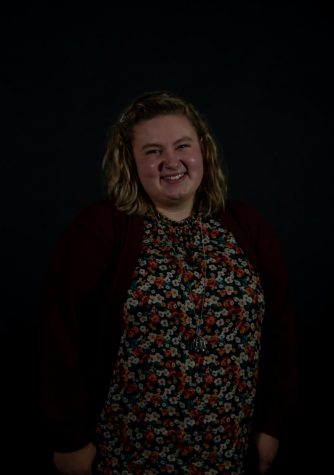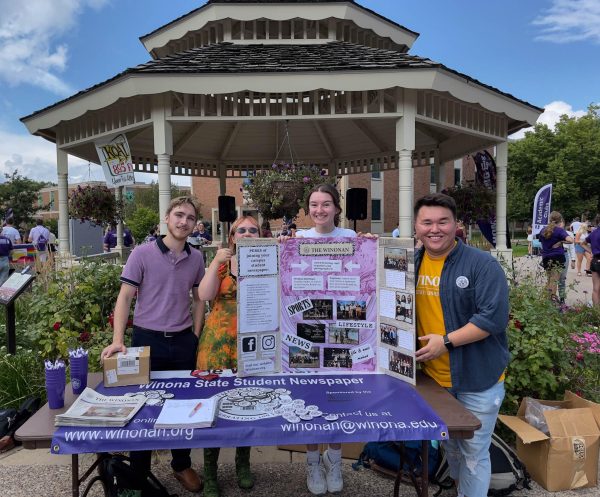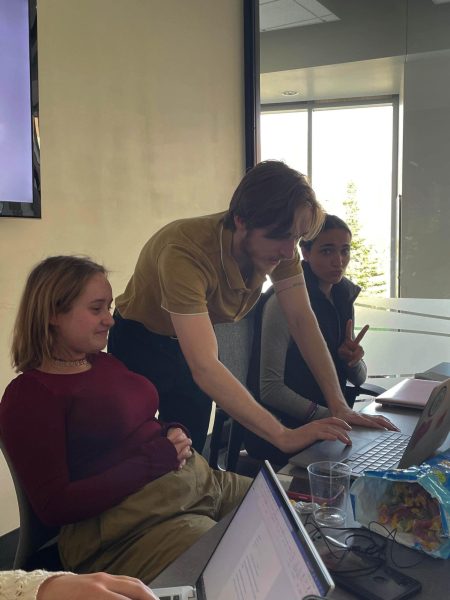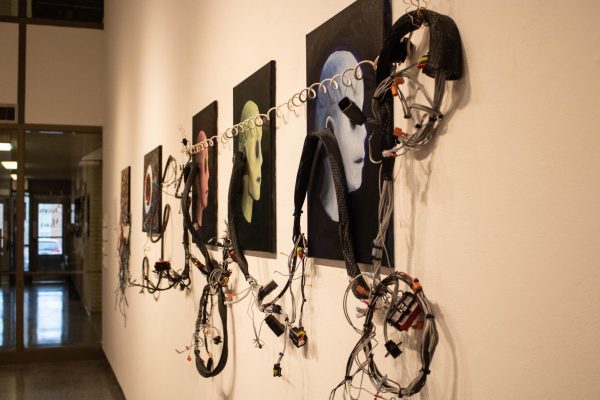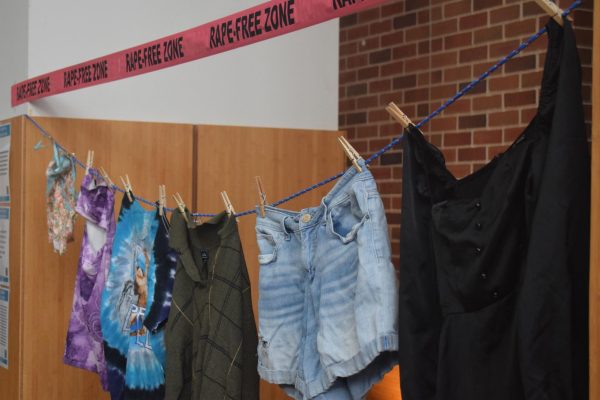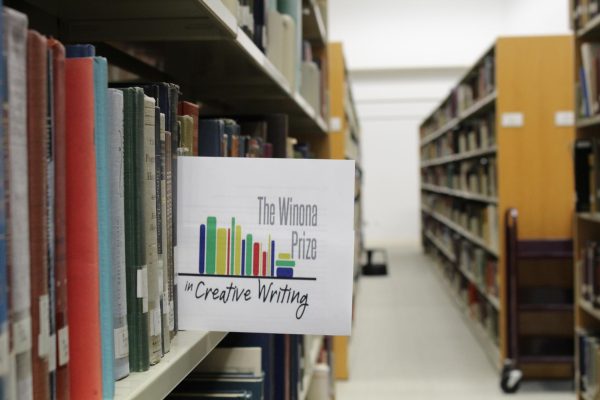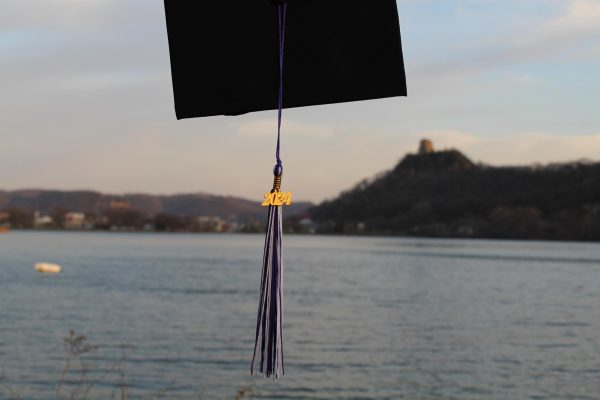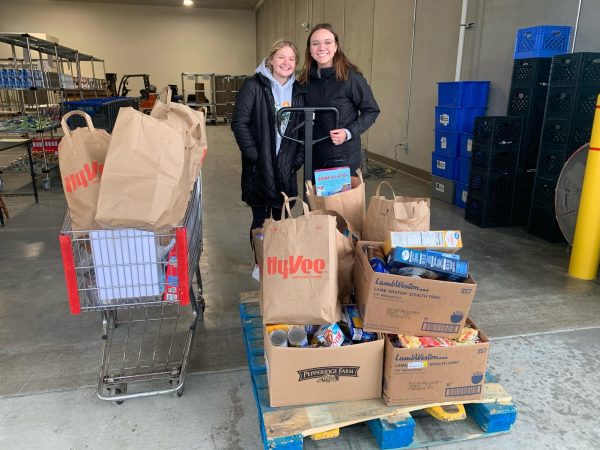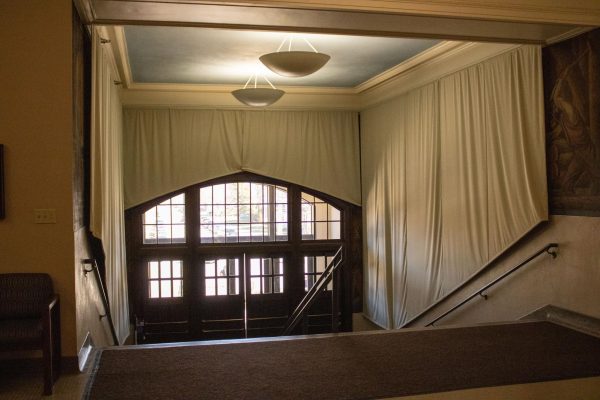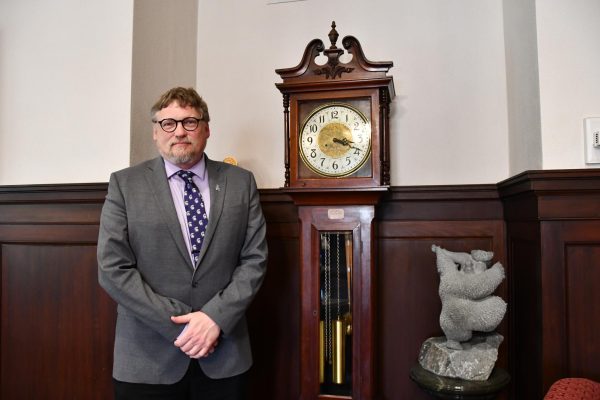Winona State Hosts COVID-19 Forum
September 3, 2020
Winona State University and City of Winona officials held a Zoom press conference Sept. 2 about their response to the COVID-19 pandemic.
Winona State President Scott Olson facilitated the press conference with his panel, including director of University Marketing and Communications Andrea Northam, an epidemiologist for the Minnesota Department of Health Cynthia Kenyon, Emergency Management Coordinator Ben Klinger, Vice President for Enrollment Management and Student Life Denise McDowell, Student Senate President Clara Kuerschner, City Manager of Winona Stephen Sarvi and Provost and Vice President for Academic Affairs Darrell Newton.
In an effort to remain “totally transparent to the community of Winona,” Olson confirmed that Winona State had “dramatic growth in lab confirmed cases among our students,”, stating that there were 73 new positive cases since last week.
To mitigate the spread of COVID, both Kuerschner and Olson wrote letters to City Council, requesting that they reduce the bar and restaurant capacity throughout Winona.
Sarvi publicly rejected their proposal, saying that if they were to reduce the capacity of bars and restaurants, they would be putting Winona businesses in jeopardy
“If we cut the numbers back any more where they are, we are creating conditions that are not viable,” Sarvi said.
Instead, Sarvi suggested students use their own discretion when walking into a bar or restaurant.
“If you open the door and things don’t look right, you can just turn around and leave,” Sarvi said.
While bars and restaurants are opportunities for spreading the virus, McDowell suggested that the spread was mostly from tight-knit groups who socialize together, rather than singular “super spreader” events.
According to McDowell, there are different levels that Winona State can be in for their handling of the COVID-19 pandemic. Winona State is currently at the yellow level, which means they have put mitigation strategies in place to help curb the spread, as the number of positive cases has been increasing for more than seven days. This also means that between 50-75% of the quarantine or isolation beds are full on campus.
Though the university is still on the yellow level, Olson said they have adopted some of the strategies for the next level up: the orange level. One of the mitigations implemented was the ban on outside visitors to university housing for the month of September.
“We have put in place some of the orange level mitigations, even though we haven’t hit the orange level yet,” Olson said. ““If we do go to orange, it will be driven by the data.”
In order to hit the orange level, 3% of the campus population would be infected within 14 days and more than 75% of the quarantine and isolation beds would be full. If this were to happen, Olson said they would take additional measures to slow the spread, including closing public access to university buildings, increase grab-and-go options for dining, and putting more classes fully online.
The yellow level includes the actions already in place. Currently, only 10% of classes are face-to-face and more than half of all classes are online only. In every classroom, Olson said there are free masks and sanitizer, as well as redesigned classrooms to allow for social distancing. There are tents to allow for outdoor instruction, as well as one-way hallways and stairways. These were all implemented before the school year began.
If cases continue to rise, Sarvi says their approach for the city will turn from “education to enforcement,” meaning that more sanctions and penalties will be put in place than are currently present.
Though cases in Winona have increased, McDowell said that this was expected, as testing was not required to return to campus, and students have been diligent about being tested if exposed or showing symptoms.
However, there were some issues with students coming back that were brought up in the Q&A portion, led by Northam.
According to Sarvi, the police and fire departments have been sent numerous times to Latsch Island to educate college students about safely social distancing while they are on the beach. He also said that, when bars first began opening again, city officials had trouble enforcing safety guidelines.
Sarvi said this has now been resolved, but they will keep checking in on bars and restaurants moving forward.
“We do our best to predict what will help, but it takes two weeks to see results,” Sarvi said. “We will be checking in on bars this weekend.”
Another issue that was recognized was how, even when someone does present with symptoms or test positive, they believe they cannot afford to stay home from work. Klinger acknowledged that for many, this is a hard decision, but there were public programs to help keep those infected from struggling financially.
Overall, Olson and McDowell believe that Winona State students are doing their best with the mitigation efforts. Olson said he had been “seeing good, even great behavior on the part of our students and employees.”
McDowell stressed the importance of demonstrating safe behaviors for the community.
“You aren’t only a warrior on campus, but you’re a warrior off campus as well,” McDowell said.
Kuerschner acknowledged that these social-distancing measures may not be easy for Winona State freshmen, but they were nevertheless important.
“[They] want to be able to stay on campus, not be sent home,” Kuerschner said. “Most of the freshmen had their senior year taken away and we don’t want to have this [semester] taken away.”























































